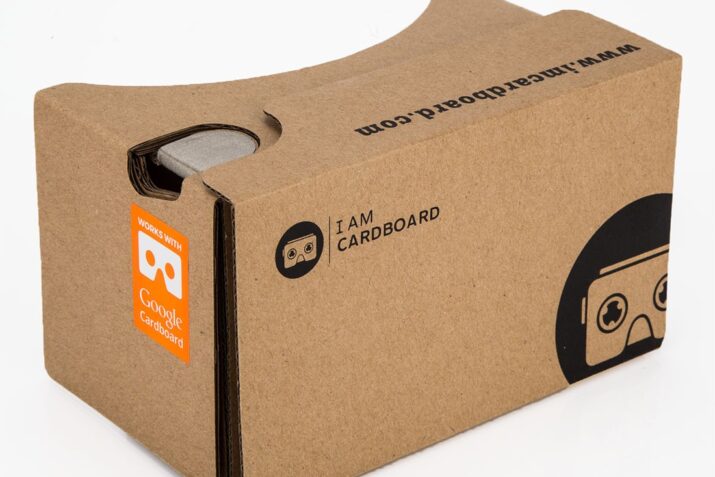
Google Cardboard brings immersive experiences to everyone in a simple and affordable way. Whether you fold your own or buy a Works with Google Cardboard certified viewer, you’re just one step away from experiencing virtual reality on your smartphone.
Get it, fold it and look inside to enter the world of Cardboard. It’s a VR experience starting with a simple viewer anyone can build or buy. Once you have it, you can explore a variety of apps that unfold all around you. And with plenty of viewer types available, you’re sure to find one that fits you just right.
So what exactly is different about Google Cardboard 2.0
The Input Button: Conductive ‘lever’ replicating physical touch
Phone Compatability: Smartphone with gyroscope and a size up to 6” (iPhone included –with input button support)
Assembly time: 5-10 seconds
Advantages: improved input button with almost device support.
Simplified construction allowing the unit to be assembled in seconds.
Support for larger phone sizes.
Improved lens quality.
More refined retail product and packaging
Disadvantages: Higher cost per unit. Large package size making shipping sizes bigger.
The Google Cardboard v2.0 has a number of significant improvements on the older v1.0 model. To summarize –
- Simplified Construction – One of the main differences is that the v2.0 comes pretty much completely constructed and ready to go (setup is 3 basic folds – takes approx 5-10secs). Whereas the v1.0 comes as a cardboard net which requires putting together (it’s relatively straightforward with the printed instructions on the card, but takes more like 1-2mins).
- Support for larger phones – The v1.0 Google Cardboard supports up to 5.2″ screen phones (about 90% of the smartphone market). Whereas the v2.0 Google Cardboard supports up to 6″ screen phones (around 99.9% of the smartphone market).
- Physical screen-touch button – The v1.0 Google Cardboard used a magnet-based switch on the side of the headset to activate a ‘click’ within an app. This was a smart idea, however, the biggest problem with this method is that it requires that the phone being used with the headset had its magnetic sensors in the end of the phone next to the button. Under 50% of phones have the sensors next to the button, so less than 50% of phones could use this button. The Google Cardboard v2.0 uses a physical ‘screen-touch’ button with a foil tip. This means when you press the button, it moves a lever to touch the screen. Therefore, it is compatible with 100% of smartphones with a touch screen input, meaning you can use all apps which require the input button.

